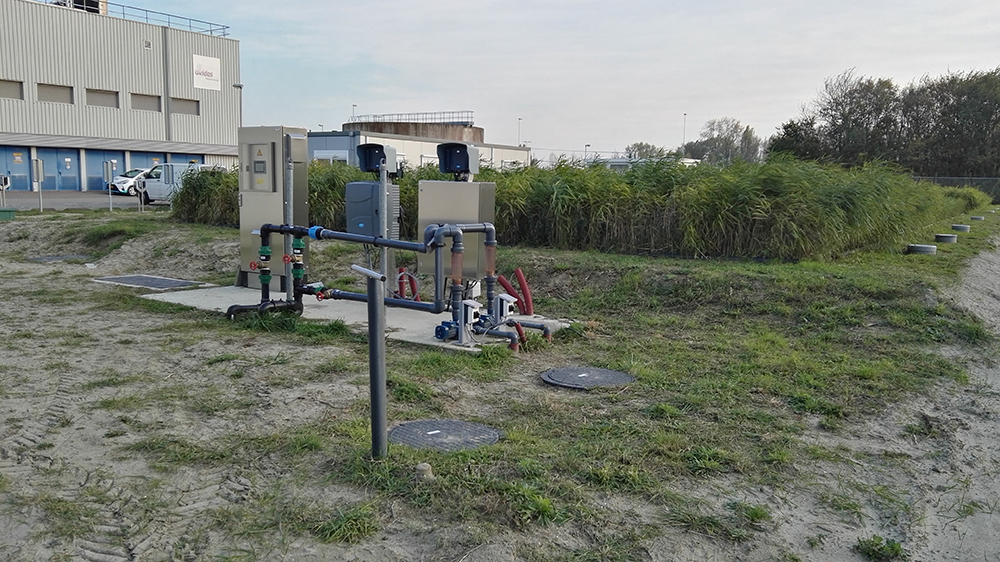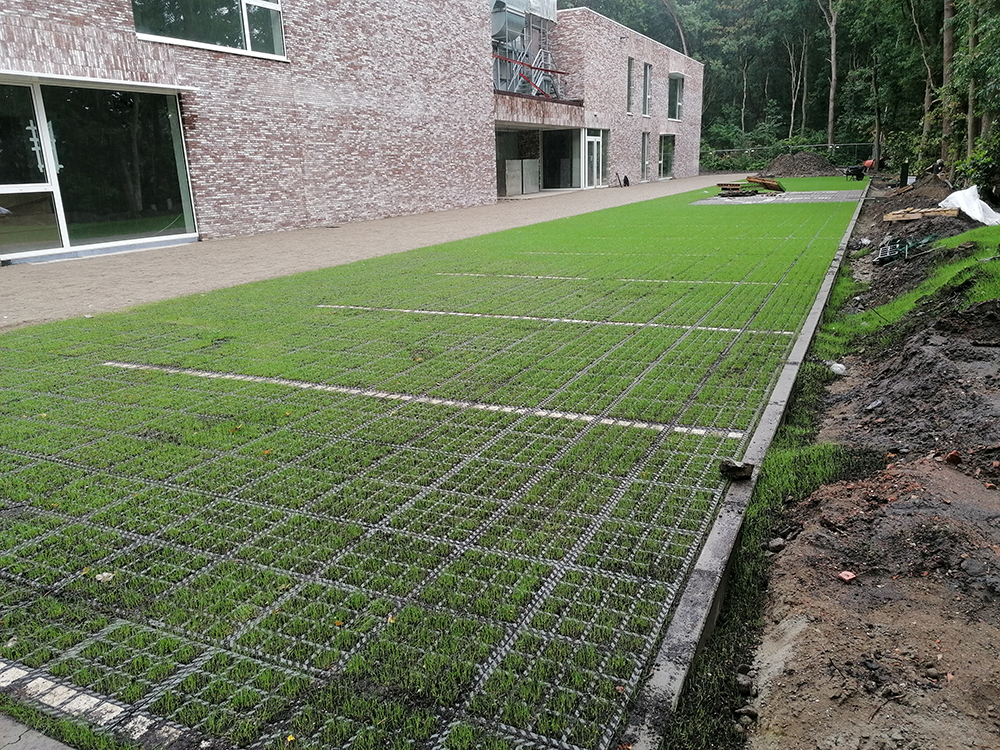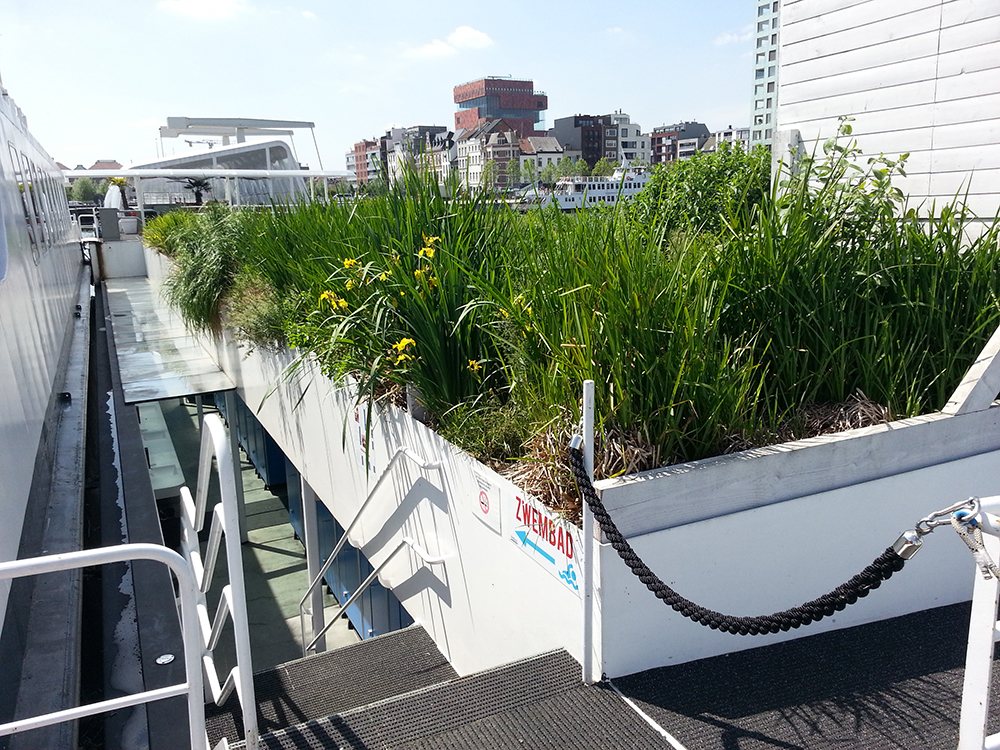Exclusive interview: H2O Global News Editor, Sion Geschwindt, spoke with Rietland Founder and Director, Dion van Oirschot, about constructed wetlands and how this nature-based solution can complement traditional waste water treatment methods.
Wetlands have been used to treat waste water for centuries. Today, constructing artificial wetlands to treat effluent is an established practice in many countries, and has recently received increased attention as a nature-based solution with several benefits for people and the planet.
Treating water with wetlands
Wetlands act as a natural filtration system in waterways, absorbing excess nutrients and chemicals, improving water quality and providing a host of ecosystem services.
The use of wetlands to treat water can be traced to ancient Chinese and Egyptian civilisations. As long as humans have discharged sewage into the environment, wetlands have more or less played a key role in cleaning it.
Most of these wetlands were naturally occurring and not designed to handle large amounts of waste water, which begged the question: How can we safely maximise the amazing water treatment potential of wetlands?
Constructed or ‘artificial’ wetlands are specifically designed to treat sewage, greywater and stormwater runoff, and remove water pollutants such as suspended solids, organic matter and excess nutrients.
It wasn’t until the 1950s that this nature-based technology really began to take off. The ‘mother’ of constructed wetland research was German scientist, Dr. Käthe Seidel, who brought this water treatment solution to the world stage.
Today, constructed wetlands are a proven, cost-effective, and low maintenance technology to treat effluent waste water and improve overall water quality.
How do they work?
Constructed wetlands are essentially an excavation filled with gravel and planted with wetland plants such as the common reed.
“Constructed wetlands act like giant filters – trapping sediment and solids, and purifying the water”
The waste water that enters these wetlands is treated through various biological, chemical and physical processes.
Constructed wetlands act like giant filters, trapping sediment and solids, and purifying the water the flows through them. They also facilitate the breakdown of chemicals through oxidation, reduction, and UV degradation. The wetland plants, and the microorganisms that thrive in the gravel, uptake and remove excess nutrients like phosphorus and nitrates.
Most of these processes are entirely natural. Constructed wetland engineers take these natural processes and design a wetland that optimises them for practical use.
Various types of constructed wetland technology exist today, each designed to match the chemical and physical composition of the waste water. For example, if the effluent has already been pre-treated and the primary objective is to remove dissolved organic matter and nutrients, a vertical flow system, where the effluent percolates down through the gravel to be collected in pipes underneath, will be the best option.

Forced Bed Aeration system
Another solution that has gained much popularity is Forced Bed Aeration. In this system, air is actively blown through the bed via airlines situated underneath the wetland. This increased oxygen transfer significantly improves the treatment capacity of the constructed wetland.
One of the companies pioneering this technology, and constructed wetlands more broadly, is Belgium-based company, Rietland Bvba.
Enter Rietland
Reitland, which literally translates to ‘reed land’ in English, is the brainchild of Dion Van Oirschot. Oirschot has a background in environmental engineering from the University of Eindhoven, Netherlands, and is passionate about harnessing the potential of nature-based solutions.
“27 years ago, I was working at an environmental centre in the Netherlands and one of the interests there was natural waste water treatment,” said Oirschot. “I came upon some books from Germany about constructing your own wetlands in your garden – I researched further and thought it would make a great business idea.”
Over two decades later, and Rietland is a global leader in constructed wetland technology, with over 250 successful projects situated throughout the Benelux (Netherlands, Belgium and Luxembourg) as well as China, the UAE and Jordan. They are also a founding member of Global Wetland Technology, the world’s largest constructed wetland association.
“I would say that the greatest advantage of constructed wetlands is that they are low-tech,” said Oirschot. “By harnessing nature-based technology, these wetlands are low maintenance, don’t require technical skills to operate, and use very little energy.”
Nature based solutions
NBS are solutions inspired and supported by nature, which are cost-effective, simultaneously provide environmental, social and economic benefits and help build resilience.
In the face of challenges such as population growth, climate change, and urbanisation, authorities, industries and even individuals are looking for innovative ways to tackle multiple problems simultaneously.
“Constructed wetlands sequester carbon, enhance biodiversity, offer flood protection in some cases, and even reduce the urban heat island effect” – Dion van Oirschot.
Constructed wetlands cannot always replace traditional approaches, but in the right context they provide a more sustainable option.
“There is a place for every technology,” said Oirschot. “Large cities are too densely populated to treat all the waste water with a constructed wetland, however, in villages or small towns or industries, you can very easily move towards nature-based solutions.”
In addition to their water treatment potential, constructed wetlands offer many of the same ecosystem benefits as their natural counterparts.
“Constructed wetlands sequester carbon, enhance biodiversity, offer flood protection in some cases, and even reduce the urban heat island effect,” said Oirschot.
Nature’s versatility
What is particularly useful about constructed wetlands is that they can be adapted to a seemingly endless number of situations.
Rietland have championed this technology through their Phyto product series. They have taken the Forced Bed Aeration system, originally developed by U.S. based company, Naturally Wallace Consulting, enhanced it, and adapted it to European standards and materials.
They have developed a number of different constructed wetlands, from the small modular ‘Phytocube’ used to treat the waste water of a single household, right the way up to ‘Phytoair’ which is a larger aerated wetland designed to treat waste water from schools, businesses and industries.

Dow chemical employ constructed wetlands to treat water for reuse
In 2019, Rietland installed a Phytoair wetland as part of a water reuse pilot project at the Dow Chemical plant in Terneuzen, Netherlands. Before the installation, the company were struggling to treat the waste water properly with their existing membrane filtration system; the membranes were fouling quickly and the replacement costs for these were very high. However, with the constructed wetland they no longer face this problem.
“The current pilot is treating 20 m³/h on a 700 m² surface and has been monitored for 2 years,” said Oirschot. “We are now looking at a full-scale system that would treat 1,000 m³/h on 3.3 ha. If everything goes well, this would go in operation in 2024, which would be spectacular!”
But these wetlands are not just limited to big open spaces. Rietland have developed a waste water treatment solution for parking spaces – aptly named ‘Phytoparking’.
Phytoparking is a Rietland patented system that doesn’t even look like a wetland: there are no reeds in sight but instead turf grids on top of a multilayer filtration system.

Phytoparking for domestic waste water of a boarding school
Waste water, grey water or even rainfall infiltrates the surface grid where it flows vertically through a gravel layer packed with bacteria whose growth is aided by the addition of oxygen.
If you thought that was ingenious, Rietland even installed an aerated wetland system aboard a floating swimming pool in Antwerp, Belgium, called the ‘Badboot’. This project won them the 2014 International Water Association’s ‘Project Innovation Award’.

Wetland aboard the ‘Badboot’
These examples show us the versatility of not just constructed wetlands, but nature-based solutions more broadly.
The urgent need to develop greener technologies calls for more of these natural solutions to complex problems such as water treatment. While constructed wetlands are no silver bullet, they can complement existing systems; reducing energy use, enhancing biodiversity and greening our infrastructures.
Oirschot sums it up nicely: “Through the recent developments and research that has been done, constructed wetlands have evolved into a very mature and reliable technology that fits perfectly into the current green strategies being deployed across the world.”
Do you have an article that you would like to share? Submit your article here or keep up with the latest news from the water industry and wastewater industry by subscribing to our weekly newsletter.







